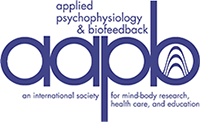Infra-Low-Frequency Neurofeedback for Optimum Performance
A method of nonprescriptive neurofeedback is described that is based on the brain interacting with its own tonic slow cortical potential. In the absence of any explicit guidance by the clinician, the training depends entirely on the brain's response to the unfolding signal. When this training is performed under optimal conditions in terms of placement and target frequency, there is a bias toward optimal functioning. The brain uses the information for its own benefit. The outcomes of the training are either comparable to or exceed expectations based on conventional electroencelphalogram band-based neurofeedback. Results are shown for a cognitive skills test for an unselected clinical population.

Three filtered traces derived from the same source, with center frequencies spaced 0.5 Hz apart, at 9.5 Hz, 10 Hz, and 10.5 Hz, respectively. The broadband electroencephalogram is shown in the top trace, and the bottom trace shows the rectified and smoothed feedback signal for one of the three traces. The green trace shows the rectified and smoothed waveform used in feedback. The compressed spectral array is shown on the right for each of the filtered traces.

Starting placements for infra-low-frequency neurofeedback. These are either used exclusively in the first session or used sequentially in the event that both are required.

The distribution of impulsivity score for a nonselected clinical population of 5,746 is shown both before and after 20 sessions of infra-low-frequency neurofeedback, in green and red, respectively. The norm is shown in black. The dotted curve shows the difference pre-post. The actual distributions are not Gaussian distributed but have been converted to Gaussian equivalent for ease of inspection. See text for discussion.

The distributions for impulsivity score before and after training are shown for a subset of the population in Figure 2. The pool is selected in terms of age (10–19 years) and is restricted to those who initially scored more than one standard deviation below norms. See text for discussion.

A fixed relationship prevails between the optimum response frequencies in the left and right hemispheres. In the electroencephalogram range greater than 2 Hz, the left hemisphere training optimizes at 2 Hz higher than the right. Below 2 Hz, the relationship is harmonic. The left hemisphere training optimizes at twice the frequency of the right.

Siegfried Othmer

Sue Othmer
Contributor Notes
